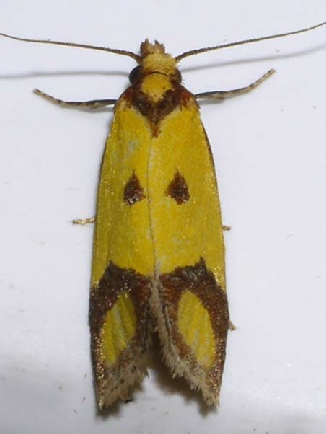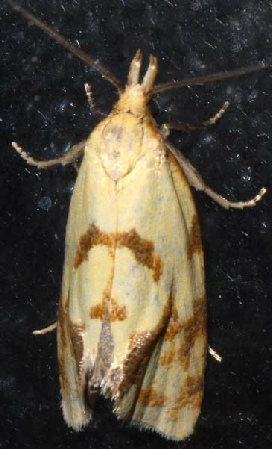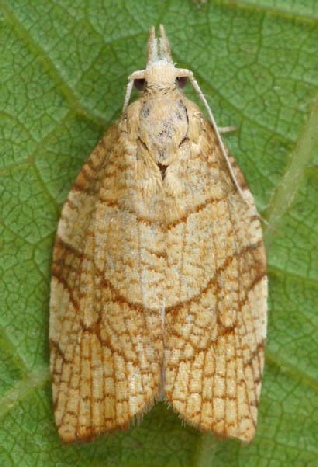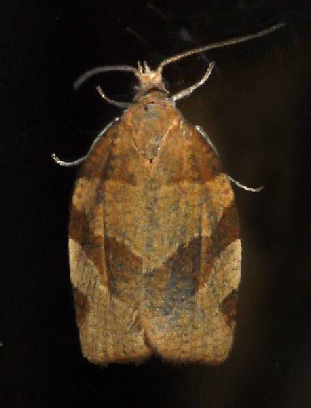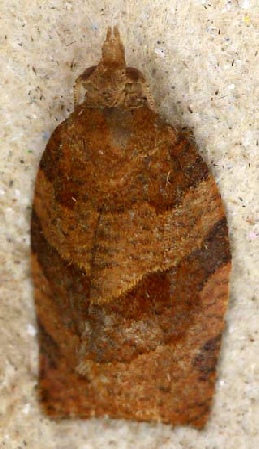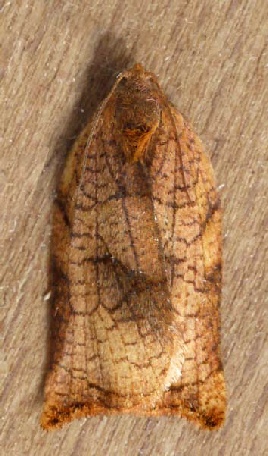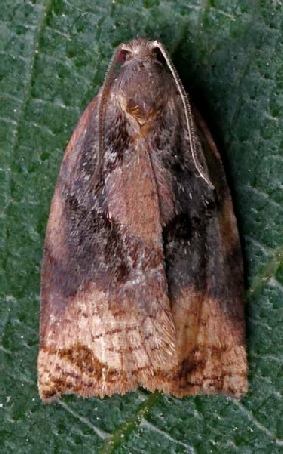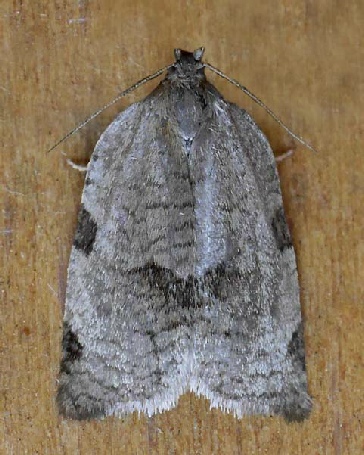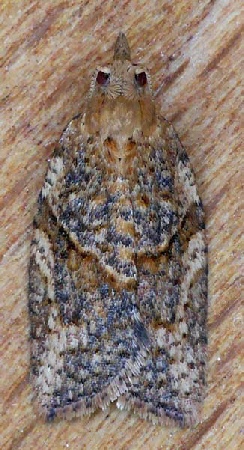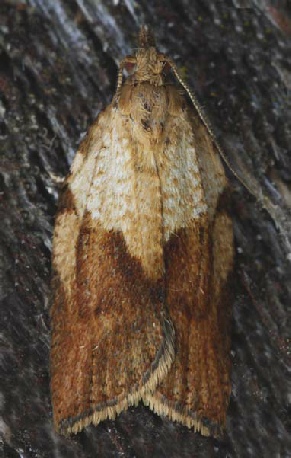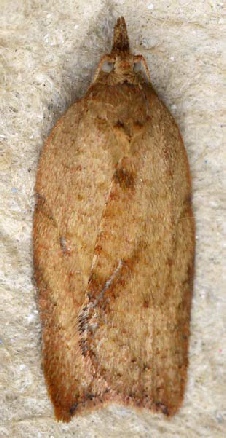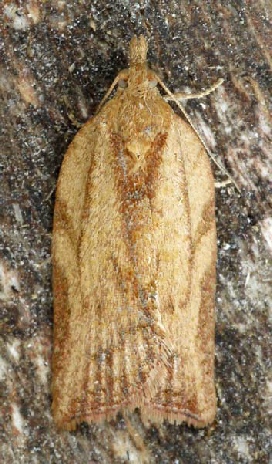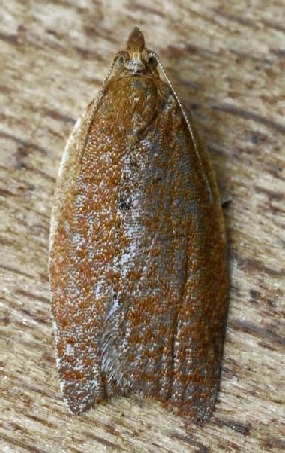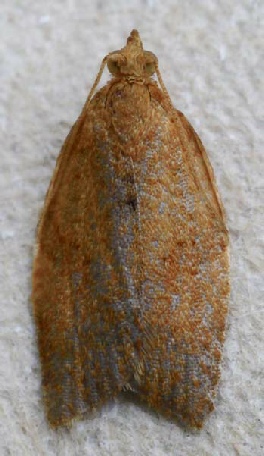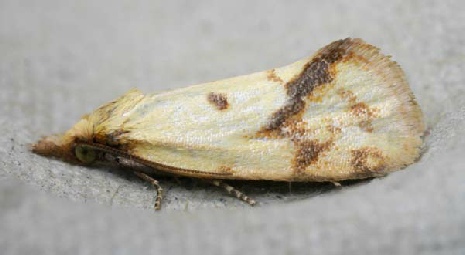Search the site for a moth name or other keyword

Tortrix moths -

The family Tortricinae is a large subfamily of the Tortricidae family of micro moths.
Some
of these are very difficult to identify because their colours and wing patterns vary
so much.
Some species are dimorphic -

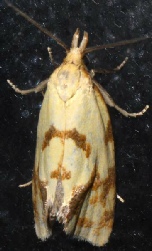
Genus Agapeta
Agapeta hamana
Background colour of the forewing is a fairly pale yellow
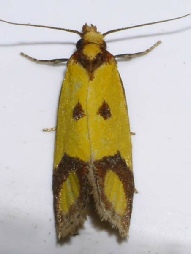
Agapeta zoegana
Background colour of the forewing is a strong deep yellow
Markings on the forewing are clearly defined and consistent
Markings on the forewing are patchy and vary from moth to moth.

Genus Cnephasia
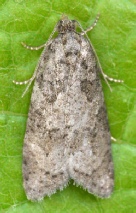
There are at least 10 recognised British species of Cnephasia, three of which are
quite common, namely :-
Grey Tortrix -
Light Grey Tortrix -
Flax Tortrix -
They can sometimes be separated by size but it is generally accepted that they cannot be distinguished from photographs.
Genus Pandemis -
Chequered Fruit-
Pandemis corylana
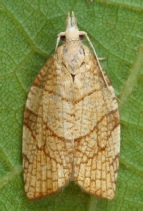

Barred Fruit-
Pandemis cerasana

Dark Fruit-
Pandemis heparana
The dark area at the base of the forewing is pointed towards the middle of the wing
The forewing is strongly netted by lines along the veins.
The forewing may be netted but not strongly.
The edge of the dark area at the base of the forewing is nearly straight.

The forewing may be netted but not strongly.
There is usually a point on the inner edge of the central cross-
The edge of the dark area at the base of the forewing is irregular in shape.

Large Fruit-
A. Podana is strongly dimorphic -
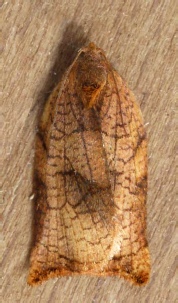
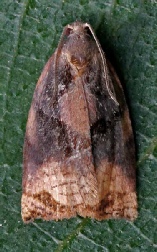
The female is longer with the tip of the forewing hooked. The forewing is strongly netted.
The male is shorter with the forewing only slightly netted.
The male can be recognised by the diamond shape in the centre of the forewing and the odd shaped pattern at outer edge of the forewing.


The patterns of the male can be recognised in the female but they are indistinct and blurred.
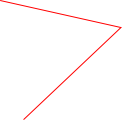
Variegated Golden Tortrix
Archips xylosteana

Archips xylosteana and Ditula angustiorana are similar to the male of A.podana but
smaller.
They are not strongly dimorphic but in each case the female is larger than
the male.
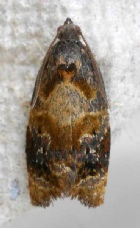
Red-
The pattern in A. xylosteana is very sharply defined

The pattern at the outer edge of the wing does not extend across the wing as in A. podana
No clearly defined pattern at the outer edge of the wing
The forewing patterns in D. angustiorana not very sharply defined

Lozotaenia forsterana and Aleimma loeflingiana
Two similar looking moths but L.forsterana is much larger.
Lozotaenia forsterana
Forewing length about 12mm
Aleimma loeflingiana
Forewing length about 8mm
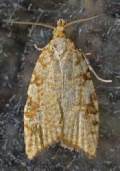
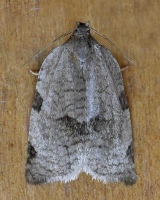
The forewing patterns in both species are consistent. However in both cases the wings may have more dark areas partly obscuring these markings.
Check also other tortrix species with a netted wing pattern such as Pandemis corylana (this page), Acleris forsskaleana, Acleris rhombana and Acleris ferrugana/notana


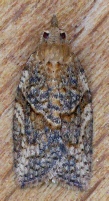
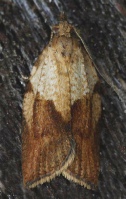
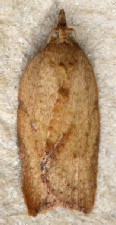

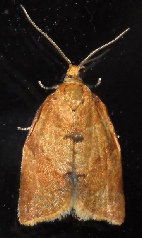
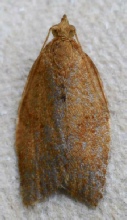
Light Brown Apple Moth Epiphyas postvittana and Clepsis consimilana
Both these species
are dimorphic -
Epiphyas postvittana -
Epiphyas postvittana -
Common male form
Even in unusual male forms the characteristic shape of the pale basal area is usually visible
The female is longer and narrower than the male and is often lighter brown with dark streaks
Clepsis consimilana -
The male has a light basal area of similar shape to the male of E.postvittana but less dramatic.

The male has two black, blurred spots formed by marks on the trailing edge of the forewing
The female is usually a plain gingery-
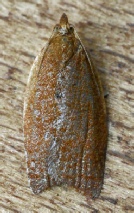
Clepsis consimilana -
Often the female has some sign of the markings of the male
